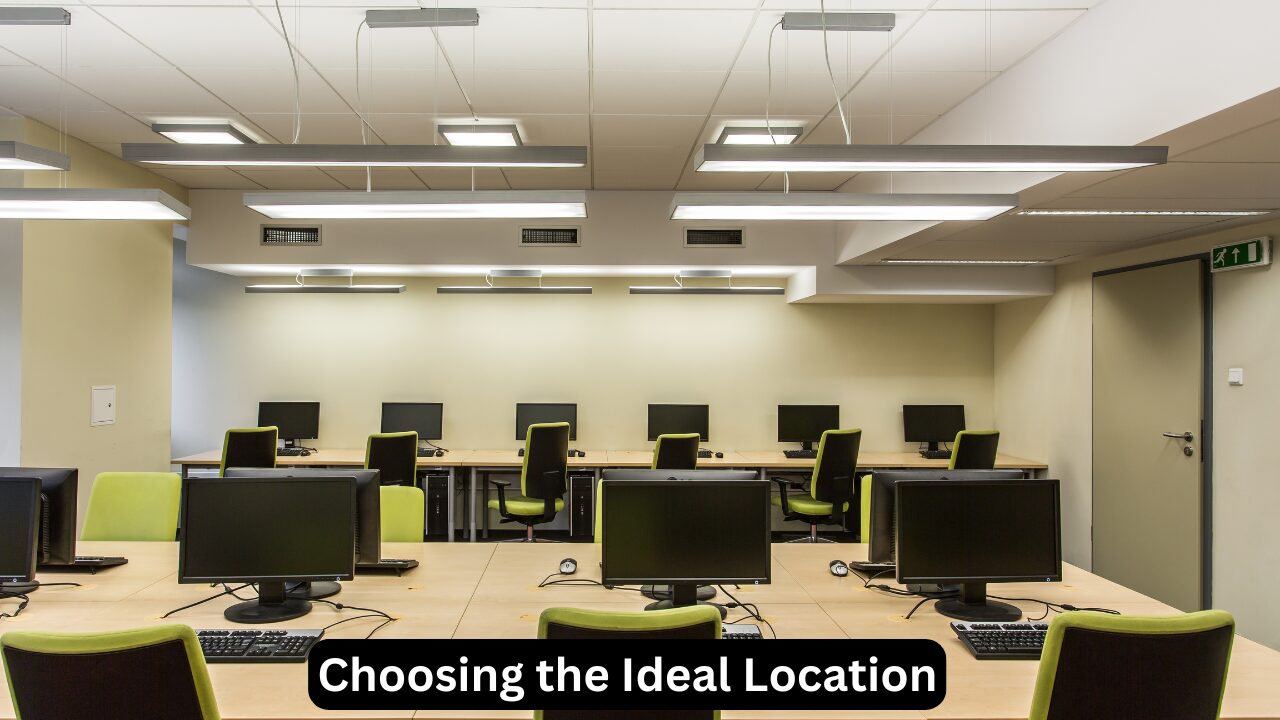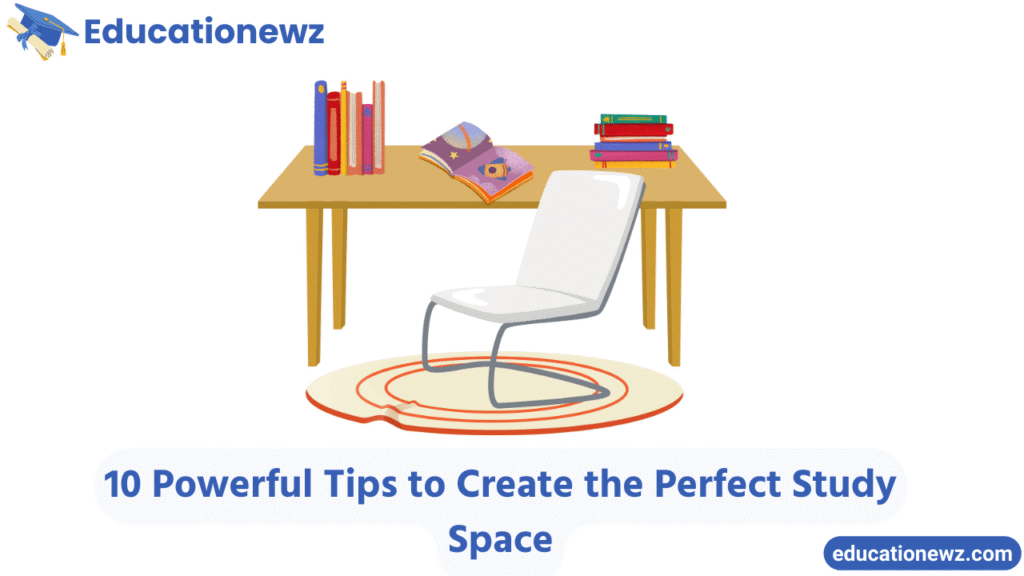A well-designed study space enhances focus, boosts productivity, and provides a comfortable environment for effective learning and task completion.
Creating an effective study space is one of the most important steps in achieving academic or professional success. A well-designed area can help you focus, stay motivated, and manage your tasks efficiently. This guide combines expert advice to offer a unique and comprehensive take on how to set up the perfect study environment that is not just functional but also inspiring.
Whether you are a student, a professional preparing for exams, or a lifelong learner, this post will help you design a study area tailored to your needs, incorporating practical tips, real-life examples, and must-have elements.
Why a Study Space Is Essential
A dedicated study space isn’t just a luxury—it’s a necessity. Here’s why it matters:
- Enhances Productivity: A distraction-free area helps maintain focus and boosts output.
- Encourages Routine: Studying in the same place creates a habit, making it easier to concentrate.
- Reduces Stress: An organized and well-lit area minimizes the chaos associated with clutter.
- Improves Mental Clarity: A structured environment helps prioritize tasks and fosters creativity.
Think of your study area as your productivity hub—it should be inviting enough to motivate you and functional enough to meet your study needs.
Choosing the Ideal Location

The location of your study setup plays a crucial role in how effective it will be.
Key Factors to Consider:
- Quietness: Select an area with minimal noise, away from televisions, kitchens, or other high-traffic zones.
- Accessibility: Your space should be easy to reach, ensuring you use it regularly.
- Proximity to Natural Light: A spot near a window offers natural light, which boosts mood and energy levels.
- Space Availability: Whether it’s a full room or a corner, make sure it accommodates your essentials comfortably.
Examples of Ideal Locations:
- A corner of your bedroom with a desk and shelves.
- A nook in the living room, separated with a room divider for privacy.
- A dedicated study room if space allows.
Designing a Functional Setup
A well-designed study space balances comfort, functionality, and aesthetics. Let’s break this down:
Must-Have Furniture:
| Furniture Item | Purpose |
|---|---|
| Desk | A spacious surface for books, laptops, and notes. |
| Ergonomic Chair | Supports posture and prevents back pain. |
| Bookshelves or Racks | Keeps study materials organized and within reach. |
Pro Tips for Setup:
- Desk Selection: Choose a desk with storage options like drawers or side shelves for added convenience.
- Chair Ergonomics: Ensure the chair height aligns with your desk, allowing your feet to rest flat on the floor.
A functional setup not only aids in productivity but also prevents discomfort during extended study sessions.
Organizing Study Materials for Efficiency
Organization is the backbone of a productive study space. A cluttered area leads to wasted time and unnecessary frustration.
Steps to Stay Organized:
- Sort Materials by Priority: Keep frequently used items like textbooks and stationery on your desk. Store less-used materials in drawers or cabinets.
- Use Labeling Systems: Label folders, binders, and shelves to quickly find what you need.
- Go Digital Where Possible: Apps like Google Drive and Evernote can help store notes and assignments, reducing physical clutter.
Importance of Proper Lighting
Lighting can significantly impact your productivity, mood, and eye health. Striking the right balance between natural and artificial light is key.
Types of Lighting to Include:
- Natural Light: Position your desk near a window to maximize daylight.
- Task Lighting: Invest in a desk lamp with adjustable brightness for focused activities.
- Ambient Lighting: Use overhead lights or wall-mounted fixtures to evenly illuminate the room.
| Lighting Type | Benefit |
|---|---|
| Natural Lighting | Boosts energy and reduces eye strain. |
| Task Lighting | Provides direct focus for reading and writing. |
| Ambient Lighting | Creates a comfortable, well-lit atmosphere. |
Integrating Technology Without Distractions

Technology is an integral part of modern studying, but it can also be a source of distraction if not managed wisely.
Recommended Tech Tools:
- Noise-Canceling Headphones: Ideal for focusing in noisy environments.
- High-Speed Internet: Ensures seamless access to online resources.
- Cable Organizers: Prevent messy cords from creating visual clutter.
- Smart Desk Lamps: Adjust lighting levels for different tasks.
Managing Tech Distractions:
- Use apps like Forest or StayFocusd to block distracting websites.
- Turn off non-essential notifications during study sessions.
Adding Personal Touches for Comfort and Motivation
A personalized study area isn’t just about functionality—it should inspire and energize you.
Ideas to Personalize Your Space:
- Incorporate Colors That Motivate You: Blue for focus, green for calmness, and yellow for creativity.
- Add Motivational Quotes: Display posters or sticky notes with messages that inspire perseverance.
- Include Greenery: Plants like succulents or snake plants purify the air and add a fresh vibe.
Maintaining Comfort and Health While Studying
Long hours in your study space can lead to physical discomfort or fatigue if not planned properly.
Tips for Health and Comfort:
- Posture Matters: Adjust your chair and desk to maintain a straight back and relaxed shoulders.
- Take Regular Breaks: Follow the Pomodoro technique—study for 25 minutes, then take a 5-minute break.
- Keep Hydrated: Always have a water bottle nearby to stay refreshed.
Ergonomic Checklist:
| Adjustment | Reason |
|---|---|
| Chair Height | Keeps feet flat on the floor and knees at 90°. |
| Desk Position | Prevents neck strain by aligning the screen at eye level. |
| Lighting | Reduces headaches and eye fatigue. |
Inspiring Examples of Study Spaces
Finding inspiration for your study space can help you create a setup that aligns with your needs and style. Here are three detailed and creative ideas:
- Minimalist Desk Setup:
- Ideal for small spaces, this setup focuses on simplicity. Use a compact desk with clean lines and a clutter-free surface. Add a quality desk lamp for proper lighting, a laptop, and only the essentials like a notebook and pen holder.
- Pro Tip: Choose neutral tones like white, gray, or beige to create a calming environment that minimizes distractions.
- Tech-Powered Space:
- Perfect for tech enthusiasts, this setup includes dual monitors for multitasking, a laptop docking station, and a height-adjustable standing desk. Complement this with noise-canceling headphones and smart lighting for optimal productivity.
- Pro Tip: Use cable management tools to keep cords organized and reduce visual clutter.
- Creative Nook:
- Designed for vibrant personalities, this setup features a colorful desk, a corkboard for pinning important notes, and a small shelf for decorative plants or books. Use bright stationery and motivational posters to keep your energy high.
- Pro Tip: Incorporate greenery, such as succulents or a peace lily, to improve air quality and add a refreshing touch.
Avoiding Common Mistakes

Creating the perfect study space involves avoiding errors that can hamper productivity and comfort. Here’s a more in-depth look at common pitfalls and how to address them:
- Overloading the Desk:
- Keeping too many items on your desk can create visual clutter and reduce focus. Only keep items you use daily, such as your laptop, notebooks, and pens. Store extra materials in drawers or shelves nearby.
- Solution: Use organizers, trays, or bins to group items and create a tidy surface. Regularly declutter your workspace to maintain order.
- Ignoring Lighting Needs:
- Poor lighting can lead to headaches, eye strain, and fatigue. Relying solely on dim ambient lighting is a common mistake.
- Solution: Place your desk near a window for natural light during the day. Add a high-quality adjustable desk lamp to brighten your workspace at night. Consider warm or neutral white bulbs to reduce glare.
- Skipping Ergonomics:
- An uncomfortable chair or improperly positioned desk can cause long-term physical discomfort, including back pain and poor posture.
- Solution: Choose an ergonomic chair with lumbar support and a desk height that aligns with your elbows when typing. Keep your monitor at eye level to avoid neck strain. Use a footrest if your feet don’t reach the floor comfortably.
FAQs About Study Spaces
1. What is the most important feature of a study space?
A good study space prioritizes comfort, organization, and minimal distractions.
2. How can I make a study area in a small space?
Use a compact desk, vertical storage solutions, and foldable furniture to maximize space.
3. Is natural light necessary for studying?
Natural light is ideal, but task lighting can be an effective substitute in darker spaces.
4. How often should I reorganize my study space?
Reorganize weekly to keep it clutter-free and efficient.
5. What’s the best way to stay focused while studying?
Minimize distractions by using noise-canceling headphones and apps that block non-essential websites.
Conclusion
Designing a perfect study space is about more than just arranging furniture—it’s about creating an environment that boosts your focus, sparks creativity, and supports your learning goals. By incorporating thoughtful elements like ergonomic furniture, proper lighting, and personalized touches, you can transform any corner into a productivity powerhouse.
Remember, a clutter-free, well-lit, and organized study area not only enhances efficiency but also makes studying a more enjoyable experience. Whether you have a spacious room or just a small nook, applying these tips will ensure your setup works for you.
Take the time to evaluate your needs, experiment with layouts, and make adjustments until you find the setup that feels right. Your study space is more than just a spot to work—it’s an investment in your success. Start creating your dream setup today and watch your productivity soar! Please follow our blog Educationewz.



